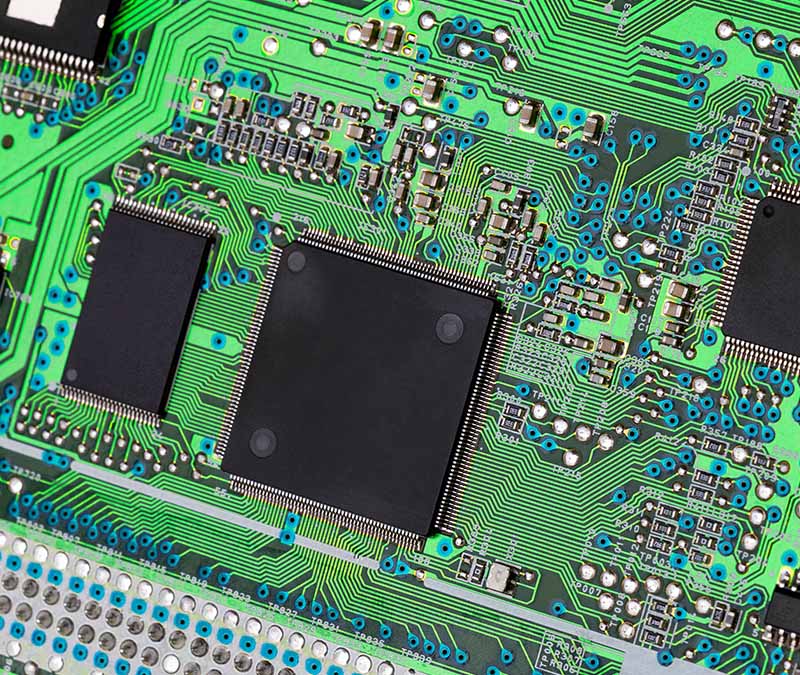How to bring your computer back from the dead
If your computer won’t turn on, follow these tips to see if you can help it come back to the living before getting a new one.

Is your computer acting like they’re on their last days? Whether you’re in the middle of writing a spooky story, streaming a horror movie marathon, or browsing the latest Halloween costume ideas, nothing seems as bone-chilling as a computer that won’t turn on. But don’t despair—or grab your wallet—just yet.
Using some tech magic, you may be able to resurrect your device. There’s a chance that your computer might just rise again with the help of advanced cloud backups, updated drivers, and a little DIY spirit.
So, follow these steps before you’re haunted by thoughts of buying a new one and feeling your wallet shudder.
Dead vs. undead computers
When your computer refuses to wake up, it might not be completely dead. It could be in a zombified state—stuck in digital limbo. However, if your computer won’t turn on at all, it might be dead-dead, meaning no number of spells will work.
However, if it’s not-quite dead yet, these steps might help wake it from its eerie slumber.
6 Steps to reanimate your computer
If you press the power button and nothing happens, don’t panic. Sometimes, all you need is a little tech magic to reanimate it.
1. Is your power outlet haunted?
Before you blame your computer, make sure it’s not the outlet that’s been possessed. Plug another appliance—like a lamp or fan—into the same socket. If the appliance doesn't work either, the ghost haunting your wall outlet might be to blame. If it does work, your power supply is safe, and we need to look elsewhere for the problem.
2. Is your power cable cursed?
Many laptops now use USB-C power cables, which are easy to replace. When your laptop won’t charge, try swapping out your USB-C cable with another to see if the issue lies there. If it springs back to life, congratulations—you’ve broken the curse! If not, it’s time to dig deeper.
3. Has your laptop’s battery been drained of its life force?
Sometimes, letting your laptop battery run completely dry can result in a device that feels like it’s gone into eternal sleep. Let it charge for a while—perhaps while you carve some pumpkins—and then try turning it on again. If it’s still not responding, the problem might be more than just a simple battery issue.
4. Is your display hiding in the shadows?
Does your computer seem to be running, but nothing shows up on the screen? The problem could be lurking in the display. For desktop users, ensure your monitor is properly connected, and try a different monitor if necessary. For laptop users, you can connect your device to an external monitor or TV using an HDMI cable.
If your home screen pops up on the external display, your laptop’s screen might be the culprit. Also, make sure your screen brightness hasn’t been turned down to zero—an eerie occurrence that can be easily fixed.
5. Is it time to clear the cobwebs?
When troubleshooting, it’s essential to remove as many variables as possible. Disconnect any external devices, such as printers, scanners, or USB drives that could be interfering with your computer’s startup process. After you’ve swept away those digital cobwebs, try turning your computer on again.
6. Is your surge protector bewitched?
If your computer is plugged into a surge protector, make sure the protector is switched on and not malfunctioning. Sometimes, these protectors can play tricks, cutting off the power without warning. If the surge protector is the issue, replacing it might just be the treat you need to wake your computer back from its slumber.
Is it time for some tech wizardry?
If none of these steps have worked, it might be time to consult a professional. But before you call in the tech wizards, decide whether the cost of reviving your computer is worth it, or if you’re better off getting a new one.
Be sure to get a written estimate from any repair service so you can weigh the cost of repairs against buying a new device. It may be time for the undead to rest—your zombie computer might be giving you a sign that it’s time for an upgrade.
Recovering files from beyond the grave
Worried about the ghosts of documents past? If you’ve been using cloud storage like Norton Cloud Backup, your files are safely floating in the cloud, ready to be accessed from any other device.
But what if you didn’t back up your files? Don’t worry—you can still recover them if the hard drive is intact. You’ll need to remove the hard drive and connect it to another computer to access your data. If this sounds like more of a Frankenstein project than you’re up for, don’t hesitate to let a professional handle it.
Prevent your computer from becoming a zombie in the future
Computers need regular maintenance to avoid untimely crashes. One of the best ways to keep your device running smoothly is by using driver updater software, such as Norton Driver Updater. This tool scans your computer for outdated drivers and automatically downloads secure, malware-free updates.
Outdated drivers are like cobwebs in your machine—they can slow it down and even cause it to crash. Your system might need to be regularly swept clean, ensuring your drivers stay up to date and preventing your computer from turning into a digital zombie.
Protect your computer from the malware ghouls
Cybersecurity threats are becoming more sinister than ever. Some cyberattacks can mimic hardware failures, making it seem like your computer is haunted by tech problems when the real culprit is malware.
Keep your antivirus programs updated to avoid falling victim to these digital poltergeists. And, if your device is yet to be under the protection of a cybersecurity software, it may be time to cast some defensive spells with Norton 360.
More alive than the Frankenstein monster
As you prepare for Halloween and all the spooky fun it brings, don’t let a dead computer cast a shadow over your festivities. With a little patience, you might just resurrect your device—and avoid having to trick yourself into buying a computer … unless you wanted to treat yourself to a new one all along.
Editorial note: Our articles provide educational information for you. Our offerings may not cover or protect against every type of crime, fraud, or threat we write about. Our goal is to increase awareness about Cyber Safety. Please review complete Terms during enrollment or setup. Remember that no one can prevent all identity theft or cybercrime, and that LifeLock does not monitor all transactions at all businesses. The Norton and LifeLock brands are part of Gen Digital Inc.




Want more?
Follow us for all the latest news, tips, and updates.